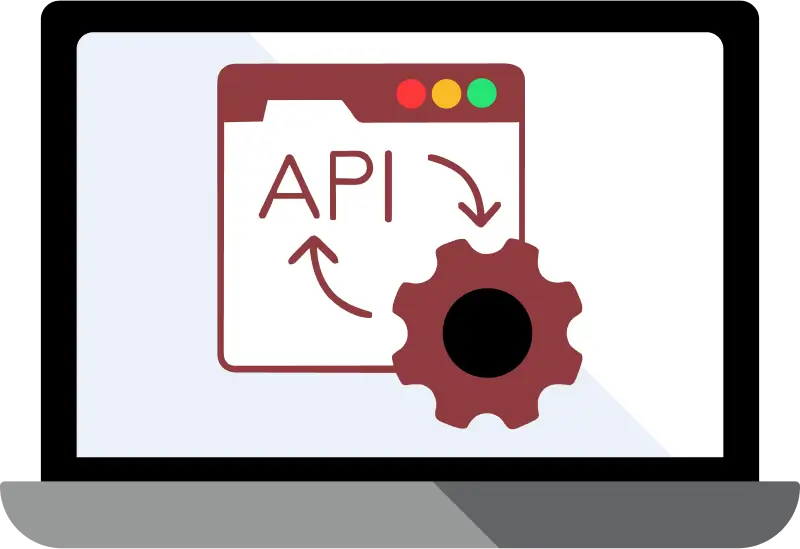What is SQL Server Deep Populate?
With API Maker’s Deep Populate, you can fetch complex, related data from Microsoft SQL Server in a single API call—no need to write complicated JOINs or manage multiple queries. Using a simple JSON syntax, Deep Populate returns fully nested data, making it easier to work with hierarchical information from your SQL Server database.
Why Use Deep Populate with SQL Server?
SQL Server is a reliable choice for many enterprise applications thanks to its powerful features. However, pulling related or hierarchical data often involves writing lengthy JOINs or multiple queries, making your code harder to maintain and slower to develop.
Deep Populate simplifies this by letting you:
- Define relationships between tables using clear JSON instructions, not SQL code
- Get fully nested responses so you see all related data at once
- Combine data from SQL Server with other databases like MongoDB or PostgreSQL in one API call
- Save time by reducing boilerplate code and extra network requests
- Utilize SQL Server’s security features like Always Encrypted
- Scale efficiently using SQL Server's availability features
This JSON-driven approach also creates self-explanatory APIs, making it easy for both developers and non-technical teams to understand data structures clearly.
Single-Level Deep Populate Example
Imagine you want to get a list of employees along with their department information—all in one go.
Request:
{
"deep": [
{
"s_key": "department_id",
"t_col": "departments",
"t_key": "department_id",
"select": "dept_name,budget"
}
]
}
Sample Response:
{
"employee_id": "EMP001",
"first_name": "Sarah",
"last_name": "Johnson",
"department": {
"department_id": "D001",
"dept_name": "Software Engineering",
"budget": 2500000.00
}
}
No lengthy JOINs are needed. The SQL Server query engine automatically figures out the best way to retrieve this related data efficiently.
Multi-Level Deep Populate Example
Now, what if you want to fetch employees along with their department, and the department’s office details as well?
Request:
{
"deep": [
{
"s_key": "department_id",
"t_col": "departments",
"t_key": "department_id",
"select": "dept_name,budget",
"deep": [
{
"s_key": "office_id",
"t_col": "offices",
"t_key": "office_id",
"select": "office_address,office_phone"
}
]
}
]
}
Sample Response:
{
"employee_id": "EMP001",
"first_name": "Sarah",
"last_name": "Johnson",
"department": {
"department_id": "D001",
"dept_name": "Software Engineering",
"budget": 2500000.00,
"office": {
"office_id": "O123",
"office_address": "123 Tech Park, Suite 400",
"office_phone": "555-0100"
}
}
}
This structure clearly represents the relationships in your data and is perfect for frontends or services requiring full context with minimal API calls.
Cross-Database Deep Populate Example
You can also combine SQL Server data with related data in other databases—like MongoDB—within the same query.
Request:
{
"find": { "employee_id": 1001 },
"deep": [
{
"s_key": "employee_id",
"t_col": "departments",
"t_key": "employee_id",
"select": "dept_name,manager_id",
"deep": [
{
"s_key": "employee_id",
"t_instance": "mongodb_analytics",
"t_db": "employee_metrics",
"t_col": "performance_reviews",
"t_key": "employee_id",
"select": "overall_rating,review_date,goals_met"
}
]
}
]
}
Sample Response:
{
"employee_id": 1001,
"first_name": "Sarah",
"last_name": "Johnson",
"departments": {
"dept_name": "Software Engineering",
"manager_id": 2001,
"performance_reviews": {
"overall_rating": 4.8,
"review_date": "2025-07-01T00:00:00Z",
"goals_met": 92
}
}
}
This means you can seamlessly combine transactional data with analytic or semi-structured data without juggling multiple APIs or creating ETL pipelines.
Supported Databases & Cross-Database Queries
API Maker supports multiple databases, enabling cross-database nested queries in a single API request, including:
Key Features & Performance Tips
- Handles all SQL Server data types including identity columns, GUIDs, NVARCHAR, BIT, computed columns, and temporal tables.
- Supports composite keys (multi-column foreign keys).
- Uses SQL Server’s query optimizer and indexes for efficient joins.
- Supports streaming large datasets to avoid memory issues.
- Filters, sorting, and pagination can be applied at any nested level.
- Robust error handling and connection management keep queries reliable and predictable.
Developer-Friendly Experience
- Use API Maker’s Test Console for building and previewing your nested queries interactively.
- Manage your schemas easily in the dashboard with automated foreign key discovery.
- Generate low-code REST APIs that automatically handle nested relationships for you.
- Incorporate caching and monitoring tools to optimize performance.
- Employ Git-based deployments for version control and smooth collaboration.
Getting Started
- Setup SQL Server connection in the API Maker Console—follow this guide.
- Allow API Maker to auto-discover your database schema and relationships.
- Write Deep Populate queries using JSON or URL-based syntax.
- Test and refine queries in the Test Console.
- Monitor and optimize query performance using built-in tools and SQL Server native monitoring.
Frequently Asked Questions (FAQs)
Can Deep Populate handle multi-column keys?
Yes, it fully supports composite primary and foreign keys without additional setup.
Will nested data ever return as flat structures?
No, the API always returns data nested to reflect your database relationships.
How are NULL or missing related records represented?
Missing records appear as null or the related property is omitted, ensuring clean output.
Can I filter or sort nested data?
Yes, you can apply filtering, sorting, and pagination at any depth in your nested queries.
Which versions of SQL Server are supported?
All supported versions, including Azure SQL Database and managed instances, work seamlessly.
How secure is Deep Populate?
It fully integrates with SQL Server's Row-Level Security and encryption features, plus API Maker adds role-based access control and input validation.
Platform Comparison Overview
| Feature | API Maker (SQL Server) – Multi‑DB API Platform | Supabase | Appwrite | Firebase |
|---|---|---|---|---|
| Database Support | Works with SQL Server, MongoDB, PostgreSQL, MySQL, Oracle & more, with cross‑database support | PostgreSQL only | Primarily document databases | NoSQL Realtime DB & Firestore |
| Nested Queries | Unlimited depth, native multi‑level joins and relationships | Basic nested joins | Limited nested document queries | Limited joins |
| Cross‑Database | Native multi‑database joins across SQL and NoSQL in one API call | Mainly PostgreSQL | Not supported | Not supported |
| API Generation | Auto‑generated REST (and optional GraphQL) with Deep Populate | REST & GraphQL APIs | RESTful APIs with functions | Client SDKs and backend tools |
| Real‑Time Support | DB‑level change detection and triggers for all connected databases | WebSocket updates | Real‑time subscriptions | Native real‑time sync |
| Security | SQL Server RLS plus role‑based access and field‑level encryption | RLS + Auth & MFA | Auth & granular access control | Firebase Authentication |
| Ease of Use | Low‑code UI, visual schema, Test Console, Git deployment | CLI and Dashboard | SDKs and serverless functions | Managed SDKs |
| Performance | Optimized joins, caching, pooling, and streaming for large datasets | Managed Postgres with replicas | Scalable open‑source | Google Cloud scalability |
Start simplifying your SQL Server data workflows today! Explore the API Maker Test Console or check out the detailed SQL Server connection guide.



